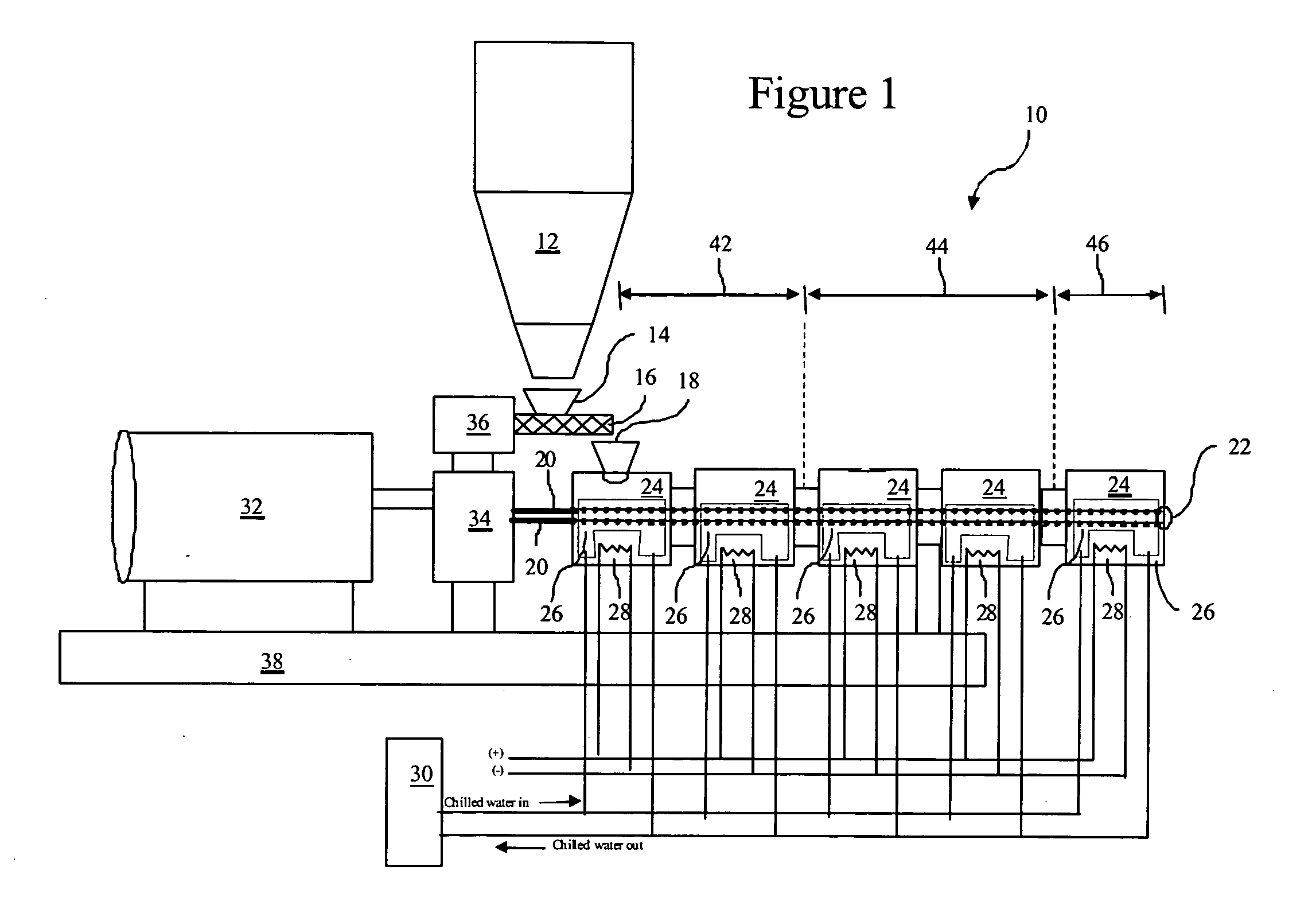Focused heat extrusion process for manufacturing powder coating compositions
a technology of extrusion process and powder coating composition, which is applied in the direction of textiles and papermaking, fibre chemical features, artifical filament manufacturing, etc., can solve the problems of less homogeneous powder coating than desired, non-uniform flow, and environmental and cost savings, so as to reduce the overall heat history of powder coating during processing, reduce internal crosslinking, and reduce the effect of ingredients
- Summary
- Abstract
- Description
- Claims
- Application Information
AI Technical Summary
Benefits of technology
Problems solved by technology
Method used
Image
Examples
examples
[0017] The following examples are intended to illustrate the invention, and should not be construed as limiting the invention in any way. “Parts” refers to parts by weight.
[0018] Measuring the characteristics of pigmented and non-pigmented powdered coatings can be done, for example, in three different ways. The first and arguably most important is crater sensitivity. If the coating is of poor quality, cratering will be obvious immediately. This test is performed by applying the powder coating to a substrate, baking the coating and visually observing whether craters are present. The second measurement is through a surface scan on a cured film measuring Long Wave (“LW”) and Short Wave (“SW”) appearances. These values determine the smoothness of the coating. This test is performed typically by a BYK Wavescan, DOI, or AutoSpec type meters. An acceptable range for Long Wave appearance is typically 0-3 and an acceptable range for Short Wave appearance is typically 0-15. The test results ...
PUM
| Property | Measurement | Unit |
|---|---|---|
| Temperature | aaaaa | aaaaa |
| Temperature | aaaaa | aaaaa |
| Temperature | aaaaa | aaaaa |
Abstract
Description
Claims
Application Information
 Login to View More
Login to View More - R&D
- Intellectual Property
- Life Sciences
- Materials
- Tech Scout
- Unparalleled Data Quality
- Higher Quality Content
- 60% Fewer Hallucinations
Browse by: Latest US Patents, China's latest patents, Technical Efficacy Thesaurus, Application Domain, Technology Topic, Popular Technical Reports.
© 2025 PatSnap. All rights reserved.Legal|Privacy policy|Modern Slavery Act Transparency Statement|Sitemap|About US| Contact US: help@patsnap.com


